Home>Gardening & Outdoor>Outdoor Recreation & Activities>How To Do A Backhandspring On The Trampoline
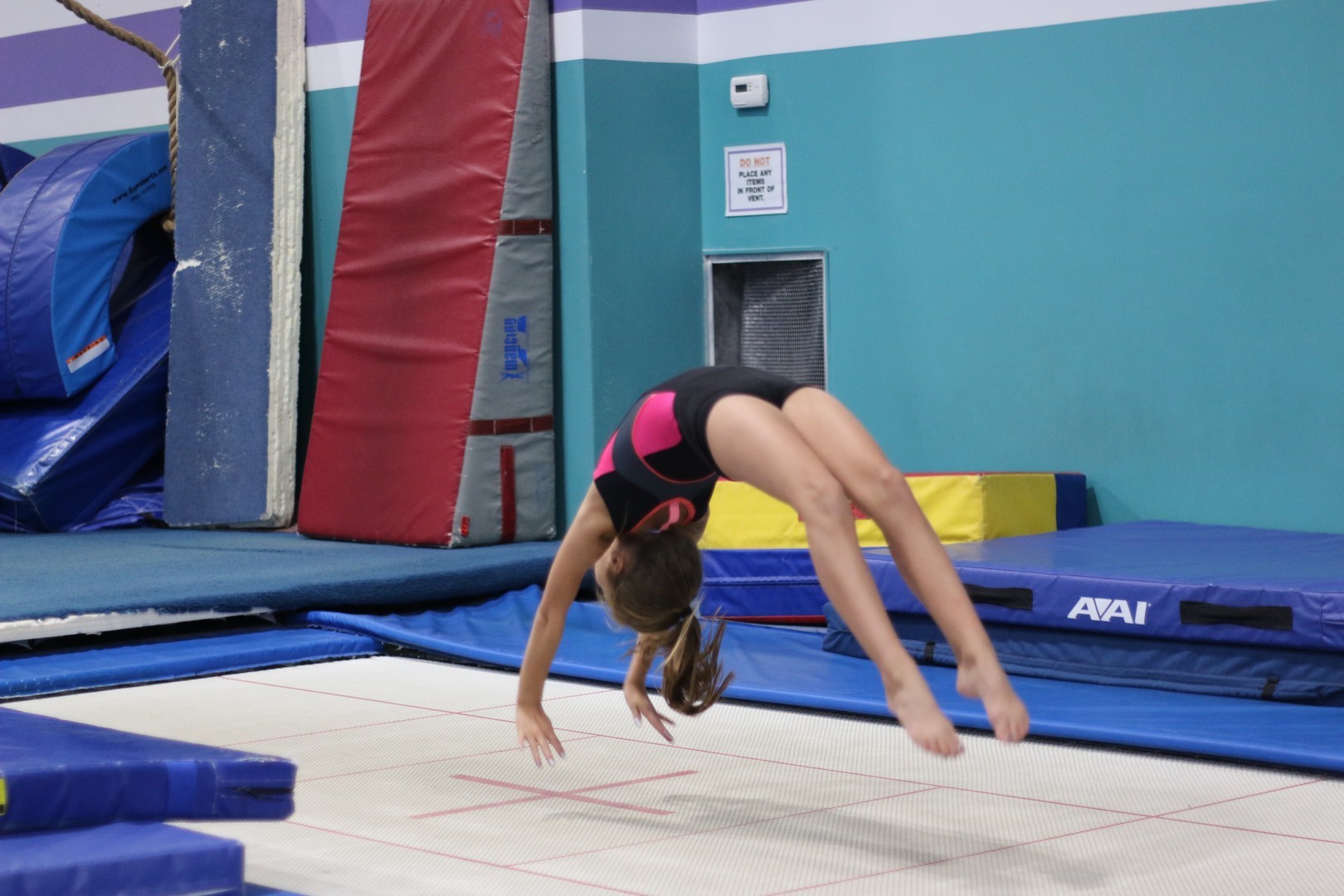

Outdoor Recreation & Activities
How To Do A Backhandspring On The Trampoline
Modified: January 8, 2024
Learn how to safely perform a backhandspring on the trampoline with our expert tips and techniques. Perfect for outdoor recreation and activities enthusiasts!
(Many of the links in this article redirect to a specific reviewed product. Your purchase of these products through affiliate links helps to generate commission for Storables.com, at no extra cost. Learn more)
Introduction
Read more: How To Do An Aerial On A Trampoline
The Thrill of Trampoline Backhandsprings
Trampolines have long been synonymous with joy and exhilaration, offering a unique way to defy gravity and experience the sensation of weightlessness. Among the many gravity-defying maneuvers that can be performed on a trampoline, the backhandspring stands out as an impressive and thrilling feat. This acrobatic maneuver combines athleticism, coordination, and confidence, making it a captivating spectacle for both the performer and the audience.
Mastering the Backhandspring
While the backhandspring may appear daunting at first, with the right guidance and practice, it can be within reach for aspiring trampolinists of various skill levels. Whether you're a seasoned gymnast looking to transfer your skills to the trampoline or a novice eager to explore the world of aerial stunts, mastering the backhandspring can be a fulfilling and rewarding endeavor. In this comprehensive guide, we will delve into the essential techniques, safety precautions, and step-by-step instructions necessary to execute a flawless backhandspring on the trampoline.
Embracing the Adventure
Embarking on the journey to master the backhandspring is not only about honing physical abilities but also about embracing the adventure of pushing personal boundaries and conquering new challenges. As we venture into the realm of trampoline acrobatics, let's approach this exhilarating pursuit with enthusiasm, determination, and a deep respect for safety. Get ready to elevate your trampolining skills and unlock the thrill of executing a perfect backhandspring with confidence and finesse.
Key Takeaways:
- Mastering the backhandspring on the trampoline requires patience, practice, and safety awareness. Embrace the thrill of achievement while prioritizing skill development and personal growth.
- Prioritize safety, seek guidance, and embrace the adventure of mastering the backhandspring. With dedication and enthusiasm, trampolinists can elevate their skills and enjoy the exhilarating world of aerial acrobatics.
Safety Precautions
Read more: How To Do A Backflip On A Trampoline
Prioritizing Safety for Trampoline Acrobatics
Before delving into the exhilarating world of trampoline backhandsprings, it is paramount to underscore the significance of prioritizing safety at all times. Trampolining, especially when incorporating acrobatic maneuvers, demands a vigilant approach to mitigate the risk of injury and ensure a secure and enjoyable experience. By adhering to essential safety precautions, trampolinists can safeguard themselves and others while exploring the art of aerial athleticism.
Appropriate Supervision and Guidance
Trampoline acrobatics, including backhandsprings, should be performed under the supervision of experienced individuals, such as gymnastics coaches or seasoned trampolinists. Their guidance can provide invaluable insights into proper technique, form, and safety measures, thereby reducing the likelihood of accidents and promoting skill development in a controlled environment.
Equipment Inspection and Maintenance
Prior to engaging in any trampoline activities, it is crucial to conduct a thorough inspection of the trampoline and its components. Check for any signs of wear and tear, ensure that the frame and springs are intact, and verify that the trampoline mat is free from tears or damage. Additionally, confirm that the trampoline is positioned on a level surface and is equipped with adequate safety padding and enclosures to prevent falls and collisions.
Physical Readiness and Warm-Up
Preparing the body for the demands of trampoline acrobatics is essential for injury prevention. Engage in a comprehensive warm-up routine that includes dynamic stretches, joint mobilization exercises, and light cardiovascular activities to enhance blood circulation and flexibility. It is vital to assess your physical readiness and refrain from attempting advanced maneuvers if you are fatigued, injured, or not feeling well.
Read more: How To Do Flips On A Trampoline
Progressive Skill Development
Mastering the backhandspring on the trampoline is a progressive journey that requires patience and consistent practice. Avoid attempting complex maneuvers beyond your current skill level and focus on gradual skill development under the guidance of a qualified instructor. By respecting your limitations and gradually expanding your capabilities, you can minimize the risk of accidents and build a strong foundation for advancing your trampolining skills.
Heightened Awareness and Focus
When executing a backhandspring on the trampoline, maintaining heightened awareness of your surroundings and body positioning is paramount. Avoid distractions and ensure that the trampoline area is clear of obstructions and hazards. Furthermore, cultivate a focused mindset that prioritizes precision and technique, as this can significantly enhance the safety and success of your backhandspring endeavors.
Embracing Safe Practices
By embracing a safety-first mindset and integrating these precautions into your trampoline acrobatics routine, you can elevate your skills while minimizing the potential for mishaps. Remember that safety is the cornerstone of enjoyable and sustainable trampolining experiences, and by prioritizing it, you can embark on a fulfilling journey of mastering the art of backhandsprings with confidence and peace of mind.
Warm-Up Exercises
Read more: What To Do With An Old Trampoline
Preparing Your Body for Trampoline Acrobatics
Before embarking on the exhilarating pursuit of executing a backhandspring on the trampoline, it is essential to prioritize the preparation of your body through a comprehensive warm-up routine. Engaging in targeted warm-up exercises not only enhances physical readiness but also reduces the risk of injury and optimizes performance during trampoline acrobatics. By incorporating dynamic movements and stretches, you can prime your body for the dynamic demands of aerial maneuvers while fostering flexibility, agility, and muscular coordination.
Dynamic Stretching
Dynamic stretching exercises serve as an effective method to increase blood flow, improve flexibility, and activate the muscles essential for trampoline acrobatics. Incorporate dynamic leg swings, arm circles, torso twists, and lunges to promote mobility and prepare the body for the dynamic movements involved in executing a backhandspring. Focus on fluid and controlled movements, gradually expanding your range of motion to enhance muscular suppleness and joint flexibility.
Joint Mobilization
Prior to engaging in trampoline acrobatics, it is beneficial to perform joint mobilization exercises to promote optimal joint function and reduce the risk of strain or discomfort. Gentle movements such as wrist circles, ankle rotations, shoulder rolls, and neck stretches can help alleviate stiffness and enhance joint mobility, ensuring that your body is primed for the dynamic nature of trampoline maneuvers. Pay attention to each joint and prioritize smooth, controlled movements to promote suppleness and resilience.
Cardiovascular Activation
Elevating your heart rate and increasing blood circulation through light cardiovascular activities is integral to preparing your body for trampoline acrobatics. Engage in activities such as light jogging, jumping jacks, or stationary cycling to stimulate blood flow, elevate body temperature, and enhance overall cardiovascular readiness. By incorporating brief cardiovascular activation into your warm-up routine, you can optimize oxygen delivery to the muscles and enhance your endurance for trampoline maneuvers.
Read more: How Long Do Trampolines Last
Balance and Coordination Drills
Refining balance and coordination through targeted drills can fortify your readiness for executing a backhandspring on the trampoline. Incorporate exercises that challenge proprioception and equilibrium, such as single-leg balances, agility ladder drills, and stability ball exercises. By honing your balance and coordination, you can enhance your body’s ability to maintain stability and control during aerial maneuvers, contributing to the seamless execution of the backhandspring.
Mental Preparation and Focus
As you engage in warm-up exercises, cultivate a focused and determined mindset that aligns with your trampoline acrobatics goals. Visualize yourself performing the backhandspring with confidence and precision, channeling a positive and resilient attitude. By integrating mental preparation into your warm-up routine, you can enhance your overall readiness and approach the upcoming trampoline maneuvers with a composed and determined demeanor.
By dedicating time and attention to a thorough warm-up routine, you can optimize your physical readiness and mental focus for the exhilarating challenge of executing a backhandspring on the trampoline. Embrace the opportunity to prepare your body and mind for the dynamic demands of trampoline acrobatics, setting the stage for a rewarding and successful experience.
Step 1: Bounce and Tuck
Initiating the Backhandspring Sequence
Mastering the backhandspring on the trampoline begins with the foundational elements of the maneuver, including the initial bounce and tuck. These fundamental components set the stage for the seamless execution of the backhandspring, requiring coordination, timing, and a precise understanding of body positioning. By mastering the bounce and tuck phase, you can establish a solid foundation for progressing through the successive stages of the backhandspring with confidence and control.
Establishing a Controlled Bounce
Commence the backhandspring sequence by executing a controlled and purposeful bounce on the trampoline. Position yourself at the center of the trampoline mat, maintaining a balanced stance with your feet shoulder-width apart. Bend your knees and initiate a gentle yet assertive downward movement, allowing the trampoline’s surface to respond with an upward rebound. Focus on maintaining an upright posture and engaging your core muscles to stabilize your body as you ascend from the trampoline’s surface.
Read more: How To Do A Double Backflip On A Trampoline
Timing and Coordination
As you ascend from the trampoline’s surface, synchronize the extension of your body with the upward momentum of the bounce. This coordination is crucial for achieving an optimal lift-off that sets the stage for the subsequent tucking phase. Maintain a keen awareness of your body’s position in relation to the trampoline, ensuring that your ascent aligns with the peak of the bounce to maximize the vertical lift and set the stage for a seamless transition into the tuck.
Executing the Tuck
Simultaneous with the upward phase of the bounce, initiate the tucking motion by drawing your knees toward your chest in a controlled and deliberate manner. Embrace your shins with your hands, securing the tuck position while maintaining a compact and centered form. Focus on aligning your body’s center of mass with the trampoline’s axis, fostering stability and control as you prepare for the subsequent extension and rotation phases of the backhandspring.
Emphasizing Technique and Consistency
Throughout the bounce and tuck phase, prioritize the refinement of your technique and the consistency of your movements. Strive to achieve a harmonious and fluid sequence that seamlessly integrates the bounce and tuck, setting the stage for the successive stages of the backhandspring. By honing the foundational elements with precision and dedication, you can cultivate a strong platform for advancing to the subsequent phases of this exhilarating trampoline maneuver.
By mastering the bounce and tuck phase of the backhandspring, you can lay the groundwork for a confident and controlled execution of this dynamic aerial maneuver. Embrace the opportunity to refine your coordination, timing, and body positioning, setting the stage for the exhilarating progression through the subsequent stages of the backhandspring on the trampoline.
Step 2: Arm Placement
Optimizing Control and Momentum
As you progress through the sequence of executing a backhandspring on the trampoline, the placement and movement of your arms play a pivotal role in optimizing control, momentum, and rotational dynamics. By mastering the nuances of arm placement, you can enhance the fluidity and precision of the backhandspring while harnessing the potential for seamless transition from the tuck to the extension phase. Embrace the opportunity to refine your arm positioning, leveraging its influence on the rotational axis and stability throughout the maneuver.
Read more: What To Do With A Trampoline In A Hurricane
Initiating the Tuck and Extension
Prior to extending into the backhandspring’s rotation, your arm positioning during the tuck phase is instrumental in facilitating a seamless transition from the compact tuck to the extended body position. As you draw your knees toward your chest and secure the tuck, position your arms to embrace and encircle your shins, creating a compact and centered configuration. This arm placement optimizes the tucking phase and sets the stage for the subsequent extension and rotation.
Emphasizing Symmetry and Balance
During the extension phase of the backhandspring, your arm positioning transitions from embracing the tuck to extending upward and outward, emphasizing symmetry and balance. As your body transitions from the tuck to the extended position, your arms play a pivotal role in fostering stability and control. Extend your arms upward and outward in a balanced and symmetrical manner, aligning them with your shoulders and maintaining a controlled yet dynamic posture that supports the rotational dynamics of the backhandspring.
Harnessing Momentum and Control
Throughout the extension phase, leverage your arm positioning to harness momentum and control, optimizing the rotational dynamics while maintaining stability and alignment. As your body extends from the tuck, your arms act as pivotal contributors to the rotational momentum, guiding the trajectory and facilitating a seamless transition into the rotation phase of the backhandspring. Embrace a fluid and coordinated arm movement that complements the extension, fostering a harmonious progression through the maneuver.
Alignment and Precision
Emphasize alignment and precision in your arm placement, ensuring that your arms extend upward and outward in a manner that supports rotational symmetry and control. Avoid excessive flailing or asymmetrical movements, prioritizing a poised and deliberate extension that optimizes the rotational axis and stability. By refining your arm placement with attention to detail and precision, you can elevate the fluidity and grace of the backhandspring while optimizing control and rotational dynamics.
Read more: How To Do A Front Handspring On A Trampoline
By mastering the nuances of arm placement throughout the sequence of executing a backhandspring on the trampoline, you can optimize control, stability, and rotational dynamics, setting the stage for a seamless and captivating execution of this dynamic aerial maneuver. Embrace the opportunity to refine your arm positioning, leveraging its influence on the momentum and symmetry of the backhandspring, and unlock the potential for a graceful and confident performance.
Step 3: The Backflip
Read more: How To Do A Front Handspring On A Trampoline
Embarking on the Aerial Rotation
The culmination of the backhandspring sequence on the trampoline unfolds in the form of the backflip, an exhilarating aerial rotation that embodies grace, athleticism, and dynamic prowess. As you transition from the extension phase to the rotational dynamics of the backflip, a harmonious blend of technique, momentum, and spatial awareness becomes paramount. By embracing the intricacies of the backflip, you can unleash the thrill of executing a seamless and captivating aerial rotation, marking the culmination of the backhandspring with finesse and confidence.
Initiating the Rotation
As your extended body reaches the apex of the backhandspring, the initiation of the backflip entails a deliberate and coordinated transition from the extended position to the rotational movement. Channel the momentum generated from the extension and engage your core muscles to initiate the rotation, drawing your knees toward your chest to commence the aerial flip. Embrace a focused and determined mindset as you initiate the rotation, aligning your body’s center of mass with the rotational axis to optimize stability and control.
Embracing Spatial Awareness
Throughout the backflip, cultivate heightened spatial awareness, maintaining a keen understanding of your body’s orientation and the trajectory of the aerial rotation. Visualize the arc of the backflip and prioritize a controlled and symmetrical posture that promotes rotational fluidity and stability. Embrace a sense of spatial awareness that aligns with the trampoline’s surface, optimizing your ability to gauge the progression of the backflip and prepare for the subsequent landing and recovery.
Optimizing Rotation and Tuck Dynamics
As the backflip unfolds, optimize the rotational dynamics by maintaining a compact and controlled tuck position, fostering a streamlined and efficient aerial rotation. Embrace your shins with your hands, securing the tuck while focusing on maintaining a centered and symmetrical form. Leverage the momentum generated from the extension to fuel the rotational dynamics, channeling a cohesive and harmonious movement that embodies grace and athleticism throughout the backflip.
Read more: How To Do Cool Tricks On A Trampoline
Spotting the Landing
As the backflip nears completion, engage in the crucial practice of spotting the landing, directing your gaze to the trampoline’s surface to gauge the timing and orientation for the subsequent landing. Maintain a composed and focused demeanor, utilizing visual cues to align your body’s position with the impending landing. By honing the practice of spotting the landing, you can optimize the precision and control of the backflip, setting the stage for a seamless transition into the final phase of the maneuver.
By embracing the intricacies of the backflip, you can elevate the artistry and athleticism of the backhandspring sequence, culminating in a captivating and exhilarating aerial rotation. Embrace the opportunity to refine your technique, spatial awareness, and rotational dynamics, unlocking the potential for a graceful and confident execution of the backflip on the trampoline.
Landing and Recovery
Capturing the Culmination of the Backhandspring
As the exhilarating sequence of executing a backhandspring on the trampoline reaches its culmination, the landing and recovery phase assumes pivotal significance, encapsulating the seamless transition from aerial rotation to stable ground contact. The art of landing and recovery embodies precision, poise, and adaptability, offering a compelling showcase of control and finesse. By mastering the nuances of the landing and recovery, you can conclude the backhandspring with confidence and grace, solidifying the culmination of this dynamic aerial maneuver.
Preparation for Ground Contact
Prior to the completion of the backflip, maintain a focused and determined mindset as you prepare for ground contact. As the trampoline’s surface approaches, anticipate the timing and orientation of the landing, aligning your body’s position with the impending contact point. Engage your core muscles and embrace a poised and adaptable posture that optimizes stability and control, setting the stage for a seamless transition from aerial rotation to ground contact.
Progressive Extension and Absorption
As your body nears the trampoline’s surface, progressively extend your legs and engage your lower body muscles to absorb the impact of the landing. Embrace a controlled and adaptable posture that optimizes shock absorption, distributing the impact forces evenly across your lower body while maintaining stability and balance. Cultivate a sense of adaptability and resilience as you transition from the aerial rotation to the ground contact, embracing the dynamic nature of the trampoline’s surface.
Optimizing Stability and Posture
Upon ground contact, emphasize stability and posture, maintaining a poised and controlled stance that minimizes the potential for imbalance or discomfort. Engage your core muscles and lower body to stabilize your posture, fostering a seamless and graceful recovery from the landing. Prioritize a balanced and symmetrical posture that optimizes your readiness for subsequent movements, reflecting the culmination of the backhandspring with finesse and control.
Fluid Recovery and Transition
Following the landing, transition into a fluid and controlled recovery, leveraging the momentum and stability garnered from the landing phase. Embrace a seamless transition from ground contact to an upright stance, channeling a sense of adaptability and poise. Maintain a composed and adaptable demeanor as you conclude the backhandspring, reflecting the culmination of the aerial maneuver with grace and confidence.
By mastering the art of landing and recovery, you can conclude the sequence of executing a backhandspring on the trampoline with finesse and confidence. Embrace the opportunity to refine your posture, adaptability, and stability, culminating in a captivating and seamless recovery that captures the essence of the backhandspring’s dynamic progression.
Conclusion
Elevating Trampoline Acrobatics
Embarking on the exhilarating journey of mastering the backhandspring on the trampoline unveils a captivating fusion of athleticism, artistry, and dynamic prowess. Through the comprehensive exploration of essential techniques, safety precautions, and step-by-step instructions, we have delved into the intricacies of this dynamic aerial maneuver, offering insights into the foundational elements that underpin its seamless execution. As we conclude this comprehensive guide, it is essential to reflect on the transformative potential of trampoline acrobatics and the profound sense of achievement that accompanies the mastery of the backhandspring.
Cultivating Skill and Confidence
Mastering the backhandspring on the trampoline transcends the realm of physical prowess, encompassing the cultivation of resilience, focus, and adaptability. By embracing the foundational elements of the backhandspring, trampolinists can refine their technique, harness their innate athleticism, and elevate their confidence in executing dynamic aerial maneuvers. The journey to mastering the backhandspring serves as a testament to the transformative power of perseverance and dedication, fostering a profound sense of skill development and personal growth.
Fostering Safety and Responsibility
Throughout this guide, we have underscored the paramount importance of prioritizing safety and responsibility in trampoline acrobatics. By adhering to essential safety precautions, seeking appropriate supervision, and embracing a vigilant approach to skill development, trampolinists can safeguard their well-being and cultivate a culture of safety within the trampolining community. The fusion of skill advancement and safety consciousness fosters an environment where trampoline acrobatics can be enjoyed with confidence, respect for boundaries, and a deep appreciation for the artistry of aerial maneuvers.
Embracing the Thrill of Achievement
As trampolinists venture into the realm of executing a backhandspring on the trampoline, they are met with the exhilarating thrill of achievement and the captivating allure of defying gravity with finesse and control. The mastery of the backhandspring embodies the fusion of art and athleticism, offering a compelling showcase of grace, precision, and dynamic prowess. Through dedicated practice, perseverance, and a deep respect for safety, trampolinists can unlock the potential for executing captivating backhandsprings that captivate audiences and embody the thrill of aerial acrobatics.
As we conclude this comprehensive guide, it is our hope that trampolinists of all skill levels will embrace the transformative journey of mastering the backhandspring, unlocking the potential for dynamic skill development, personal growth, and the exhilarating thrill of executing captivating aerial maneuvers on the trampoline. With a commitment to safety, dedication to skill refinement, and a deep passion for the artistry of trampoline acrobatics, trampolinists can elevate their capabilities and embrace the captivating fusion of athleticism and artistry that defines the mastery of the backhandspring.
Frequently Asked Questions about How To Do A Backhandspring On The Trampoline
What are the basic steps to do a backhandspring on the trampoline?
To do a backhandspring on the trampoline, you need to start by standing in the middle of the trampoline with your feet shoulder-width apart. Then, bend your knees and swing your arms back as you jump up. As you reach the peak of your jump, push off the trampoline with your hands and kick your legs over your head to complete the backhandspring.
Is it important to warm up before attempting a backhandspring on the trampoline?
Yes, it is crucial to warm up before attempting a backhandspring on the trampoline. Warming up helps to loosen your muscles and increase blood flow, which can reduce the risk of injury. You can warm up by doing some light jogging, stretching, and practicing some basic trampoline jumps before attempting the backhandspring.
What are some safety tips to keep in mind while practicing backhandsprings on the trampoline?
Safety is paramount when practicing backhandsprings on the trampoline. Always ensure that the trampoline is in good condition and placed on a flat, even surface. It’s also important to have a spotter or instructor present to provide guidance and assistance. Additionally, make sure to clear the area around the trampoline of any obstacles or hazards.
How can I improve my backhandspring technique on the trampoline?
To improve your backhandspring technique, focus on building strength and flexibility in your arms, shoulders, and core muscles. Practice proper form and technique, and gradually increase the height and power of your jumps. It’s also helpful to watch tutorials and seek feedback from experienced trampolinists to refine your technique.
Are there any drills or exercises that can help me progress towards a backhandspring on the trampoline?
Yes, there are several drills and exercises that can help you progress towards a backhandspring on the trampoline. These include practicing handstands and cartwheels to build upper body strength and coordination, as well as working on back tucks and backflips to get comfortable with rotating backwards in the air. Additionally, trampoline-specific drills like bouncing on your back and practicing back handsprings with a spotter can also be beneficial.
Frequently Asked Questions about How To Do A Backhandspring On The Trampoline
Was this page helpful?
At Storables.com, we guarantee accurate and reliable information. Our content, validated by Expert Board Contributors, is crafted following stringent Editorial Policies. We're committed to providing you with well-researched, expert-backed insights for all your informational needs.
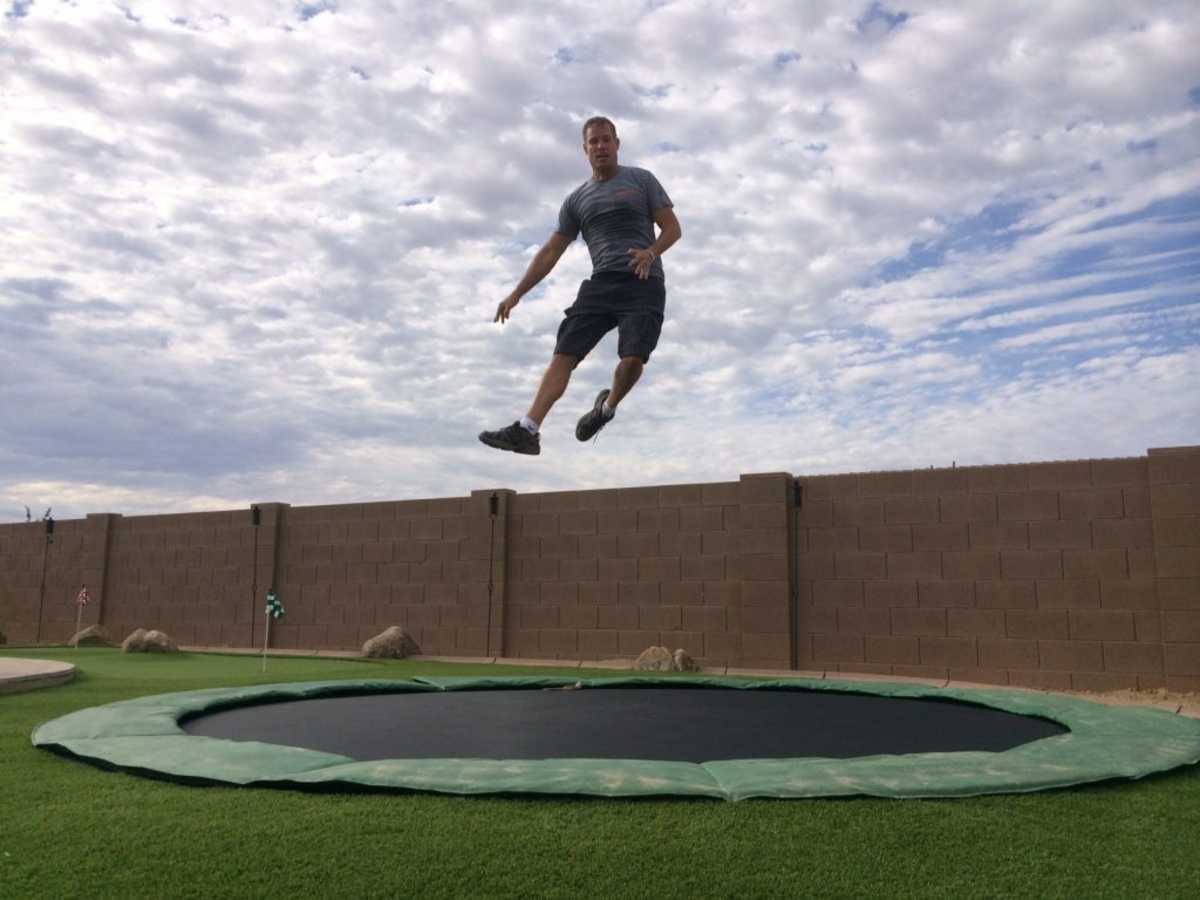
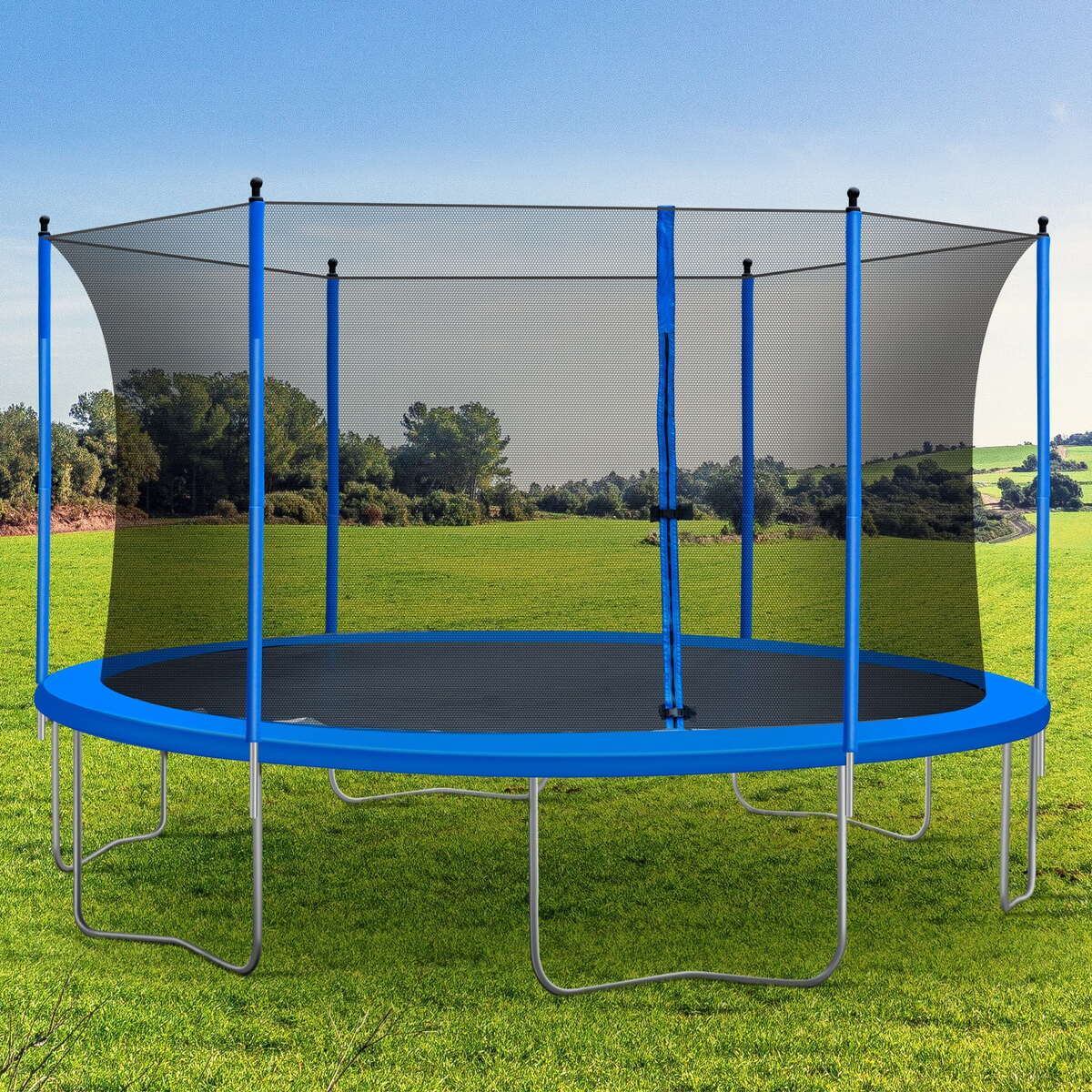
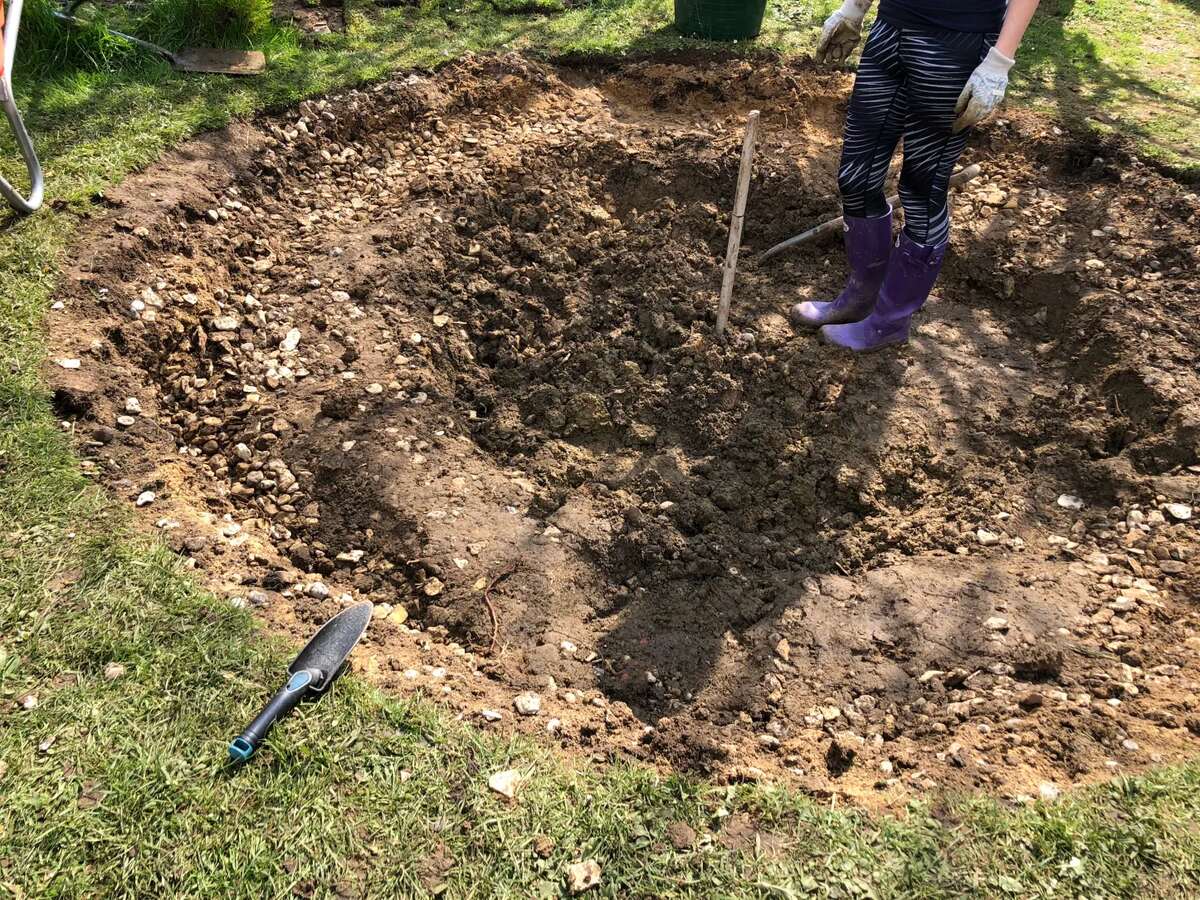
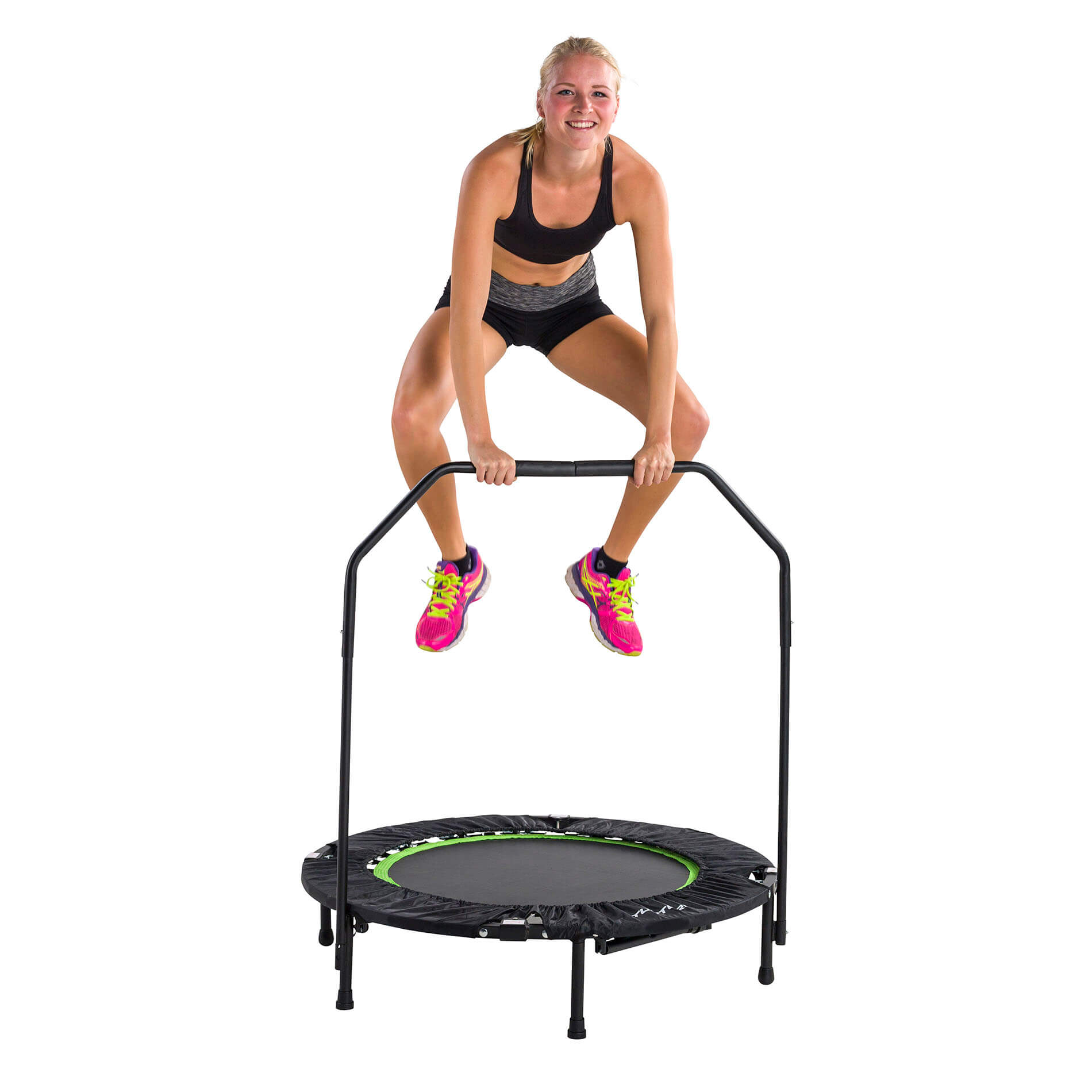
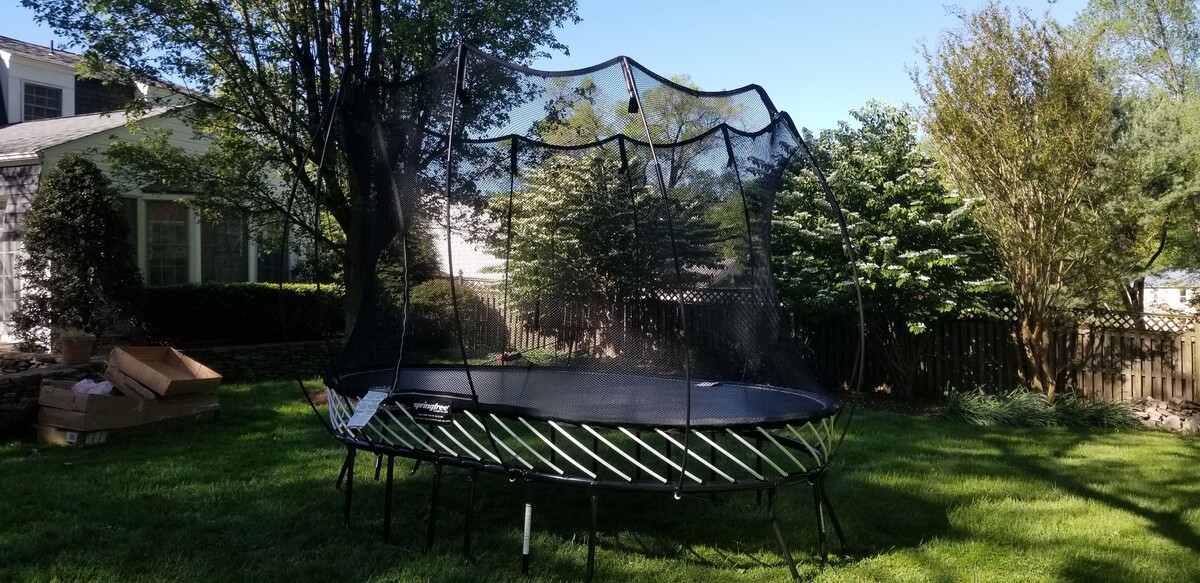

0 thoughts on “How To Do A Backhandspring On The Trampoline”